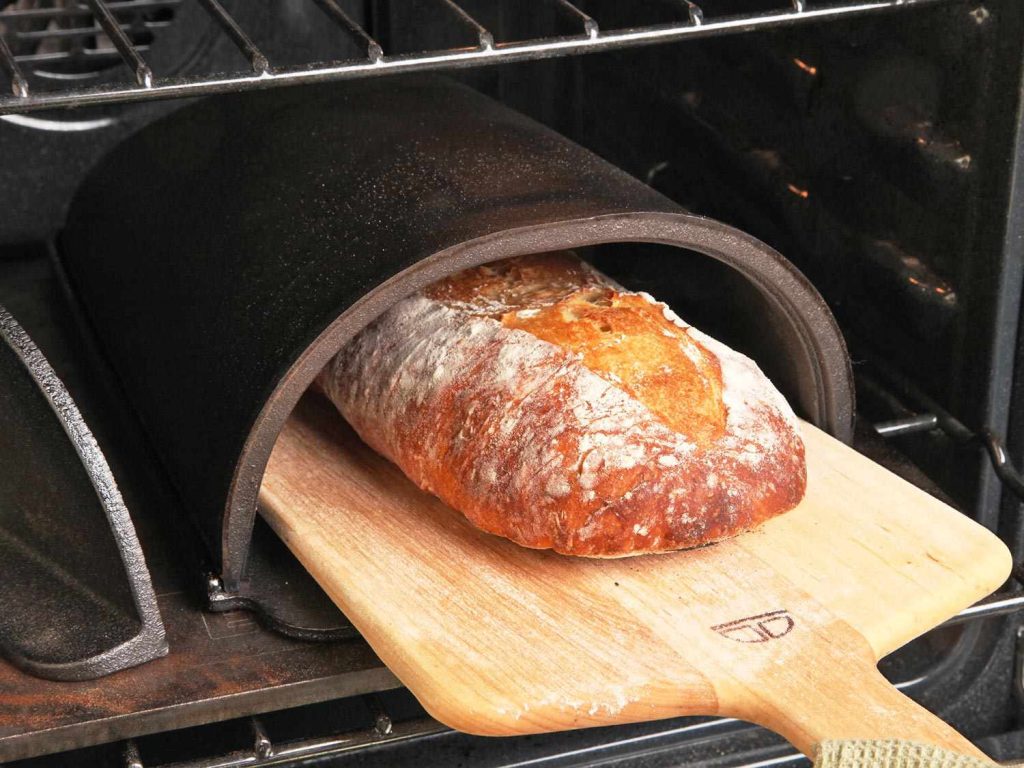Have you ever tried your hand at baking a loaf of homemade bread? If so, you may have wondered if the baking process is considered a chemical change. After all, it does involve combining ingredients like flour and yeast to create something entirely new. Let’s take a look at what happens when we bake bread to answer this question.

Table of Contents
What Is a Chemical Change?
Before we can say for sure whether or not baking bread is a chemical change, it’s important to understand exactly what constitutes a chemical change.
A chemical change occurs when two substances combine to form an entirely different substance. This means that the original substances are transformed into something completely new with distinct properties.
Is Baking Bread A Chemical Change?
Yes, bread-making involves combining several ingredients—flour, water, salt, yeast—which means that it has the potential to be considered a chemical change.
During the kneading process, gluten molecules in the flour react with water molecules and become linked together, creating long protein chains called gluten strands.
As more water is added during kneading, these gluten strands become even longer and more elastic and trap carbon dioxide gas bubbles released by the yeast during fermentation.
In other words, something completely new has been created—a doughy mass that behaves differently than any of its individual components did on their own!
The baking process is when things really get interesting because heat energy triggers various physical and chemical reactions at once. On one hand, the heat dries out some of the dough’s liquid content while simultaneously breaking down starch molecules into simple sugars (which gives baked goods their sweet flavor).
On the other hand, proteins and carbohydrates in the dough undergo Maillard reactions which give bread its characteristic golden-brown exterior crust and nutty aroma—all of these changes occur as part of one single reaction!
FAQs
Is souring milk a chemical change?
Souring milk is a classic example of a chemical change that takes place through the process of fermentation.
During this process, bacteria convert the natural sugars in milk into lactic acid, which causes the sour flavor and thick texture associated with soured milk.
It is also possible to add special cultures to fresh milk to cause this reaction more quickly. While this process is a chemical change, it can also be reversed by boiling the milk to kill off the bacteria. The sour taste will disappear, leaving behind fresh milk once again.
In summary, soured milk is a result of a chemical reaction and can be reversed through heating.
Although it may not look like much has changed in the milk, a chemical reaction has taken place to cause this change in taste and texture. This is why soured milk is considered a classic example of a chemical change.
Understanding the science behind this process can help us appreciate how complex and dynamic the natural world truly is.
Ultimately, understanding the chemical changes that take place when milk sours can help us understand the chemical changes taking place in other parts of the natural world. From food production to biotechnology, chemical reactions are at the heart of many processes that make life possible on Earth.
By understanding these chemical changes and their implications, we can work towards protecting our planet for future generations.
Read more: Is Baking Bread Endothermic Or Exothermic?
Is cooking an egg a chemical change?
Cooking an egg is considered a chemical change because it involves the rearrangement of molecules.
When you cook an egg, heat causes the proteins in the egg to break down and form new compounds.
This type of reaction is called denaturation, and it can’t be reversed—the original molecules are permanently changed. It’s a similar process to when you combine certain chemicals together to form new compounds. That’s why cooking an egg is thought of as a chemical change.
There are other clues that this is a chemical reaction, too: it involves changes in color and texture, and there are often gases released or absorbed during the process.
All these factors together make it clear that cooking an egg is a chemical change.

Conclusion
So there you have it — baking bread does indeed constitute a chemical change! By combining several different ingredients together in just the right way under specific conditions (heat), you can end up with something entirely different from any of its constituent parts alone — making it an excellent example of how chemistry works in our everyday lives! Whether you’re an experienced baker or just getting started on your journey toward becoming one, understanding how chemistry plays into bread-making can help you perfect your recipes even further. Give it a try today!
References:
https://www.sciencedirect.com/science/article/pii/S0023643810001490








